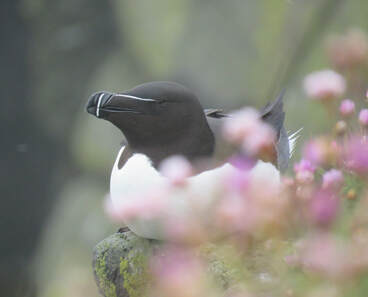 Razorbill and sea-pinks
Razorbill and sea-pinks We walked south along the coast, past golfing umbrellas and flooded bunkers. Past broad beans in flower. Dunstanburgh Castle rose ghostly in mist and rain, Gull Crag and Rumble Churn looking dark and gloomy, with basalt rockfall thick at the base of the cliffs.
We entered by the main gatehouse, went out beyond the curtain wall and found a sheltered lunch spot looking down into Queen Margaret’s Cove.
Two days ago we were on the Farne Islands in bright sun, a beautiful day. We shared the sea-bird cliffs with many visitors, with school parties. Today, no one else saw the razorbill and kittiwake of Dunstanburgh.
The razorbill lays a single egg on its cliff-ledge and some three weeks after hatching the chicks will leap the cliff, encouraged by their fathers from the sea below. These ' jumplings' cannot yet fly but they swim out to sea and their fathers stay with them until they can fend for themselves. Razorbill and guillemot chicks have this same jumping habit.
Coming in mid- July to Pigs' Paradise on Colonsay we must have missed the jumplings by days. I'd love to have seen them leap.
Tweet of the Day. Razorbill with Miranda Krestovnikoff for a recording of razorbill giving voice
Chicks galore! Scottish Nature Notes our work RSPB
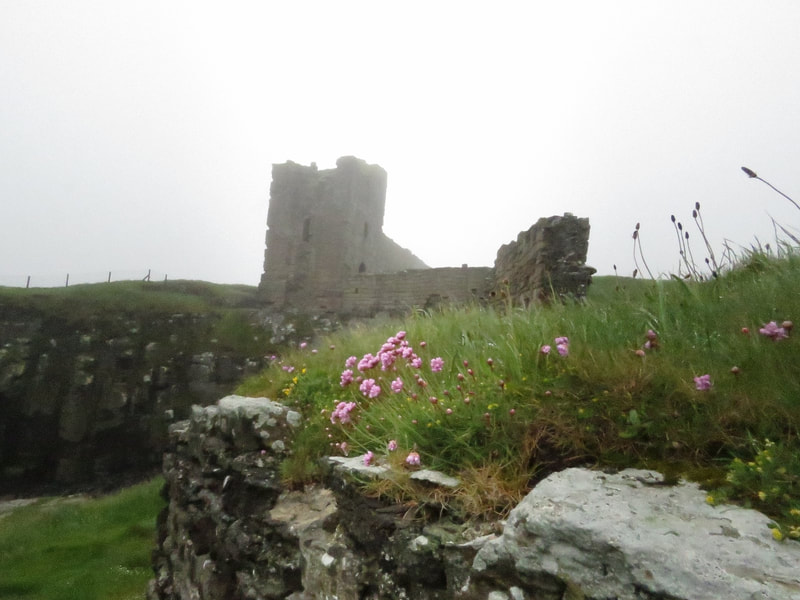
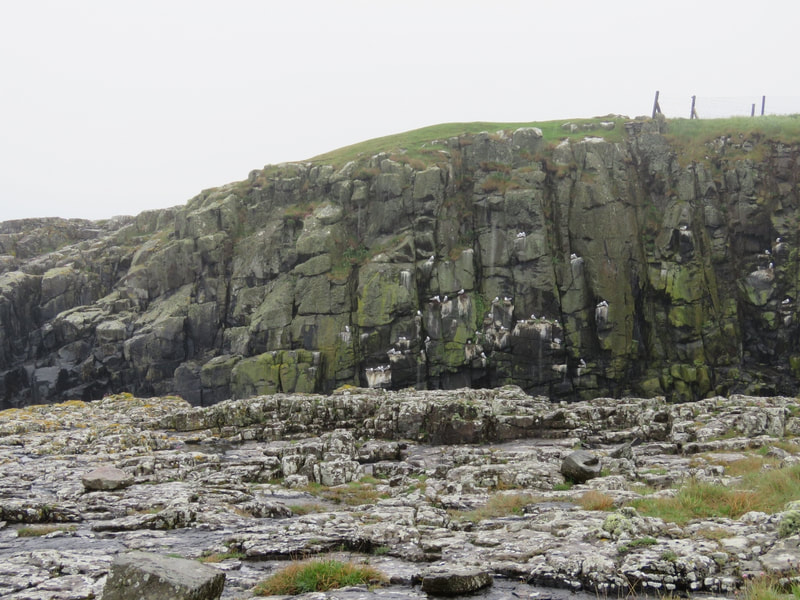


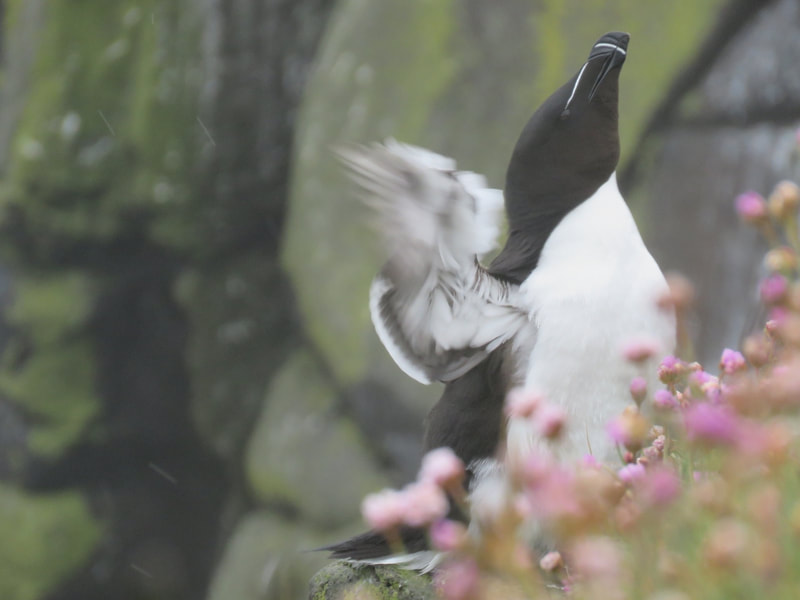
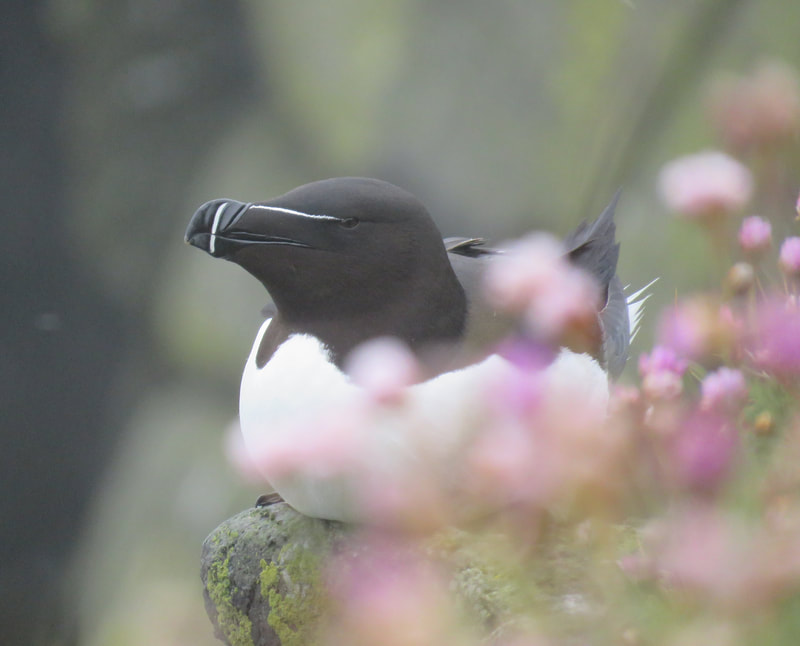
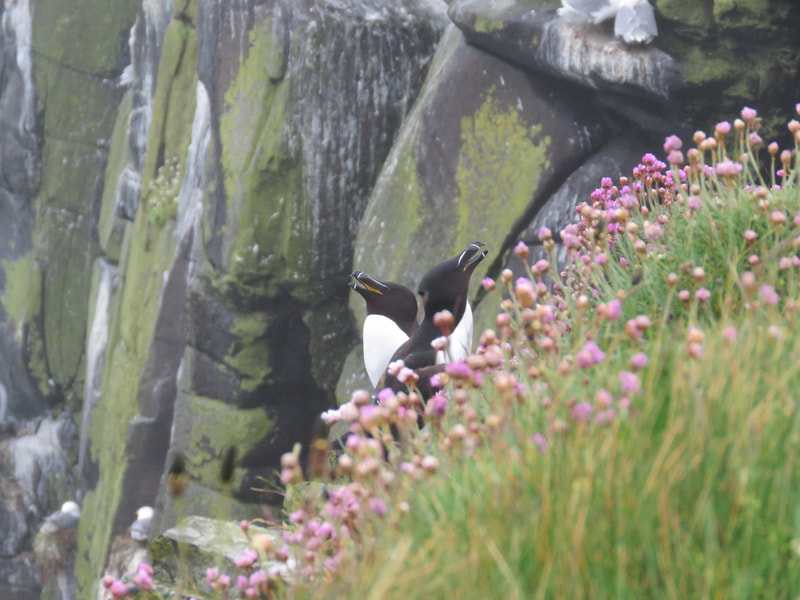
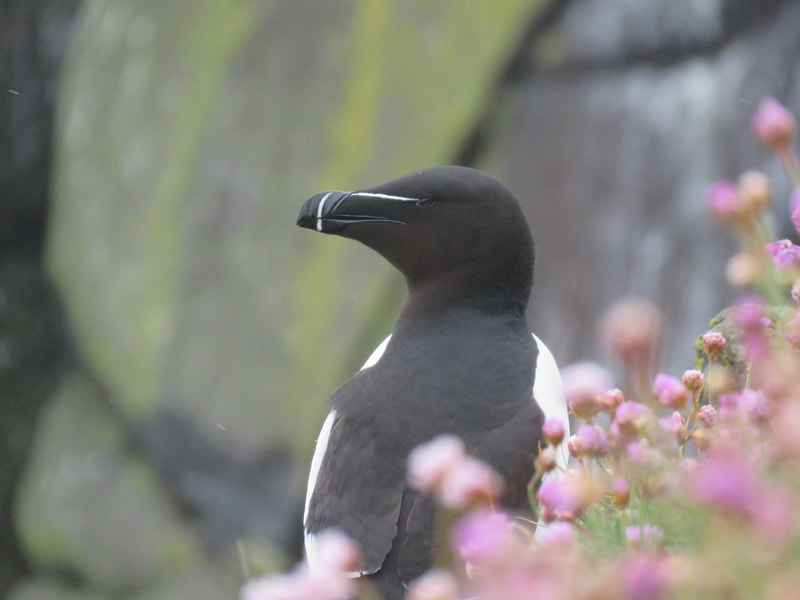
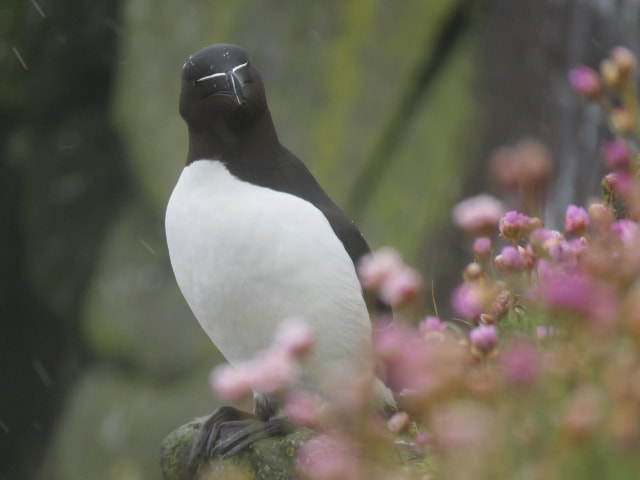
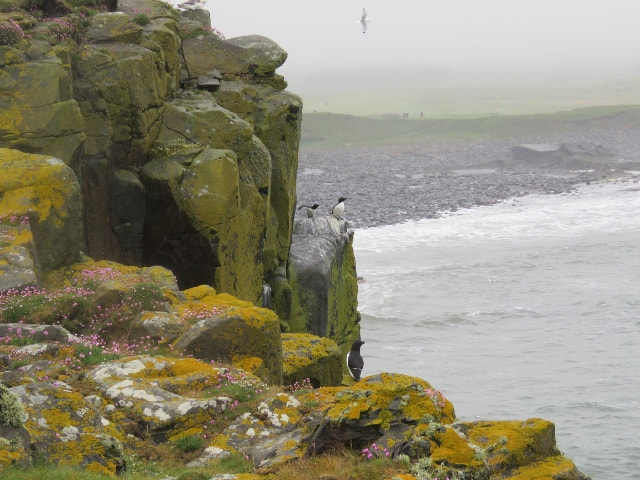
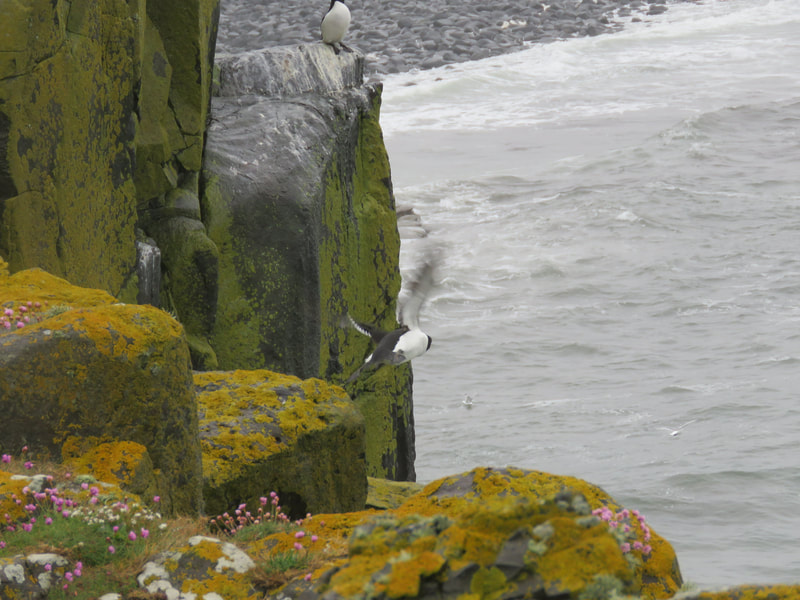
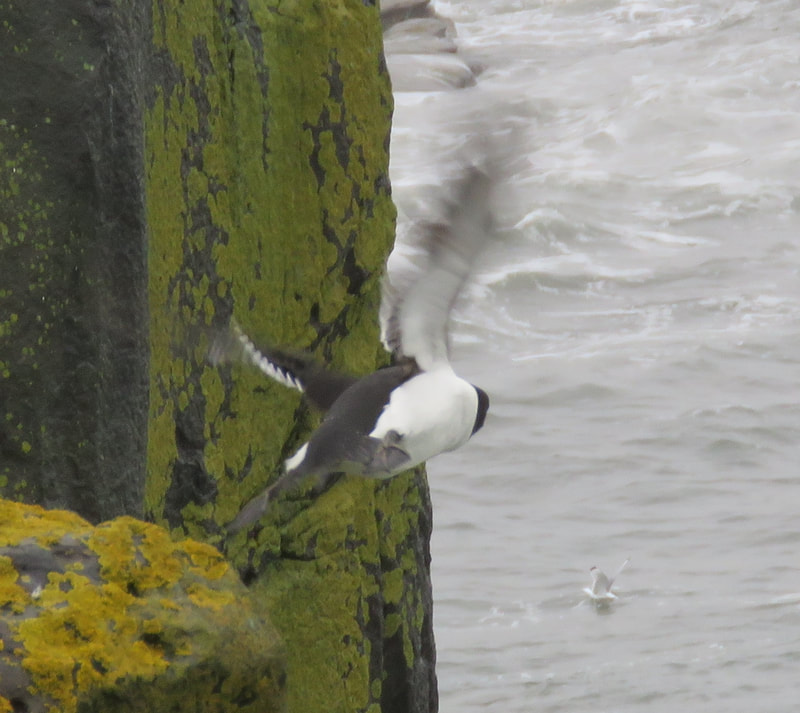
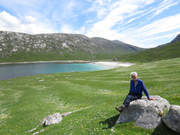
 RSS Feed
RSS Feed